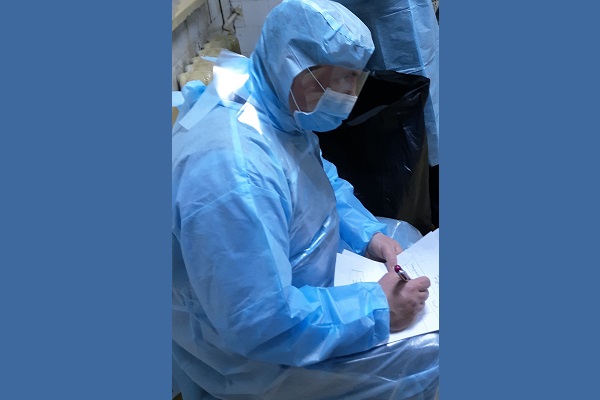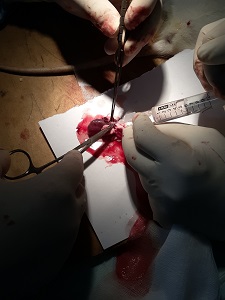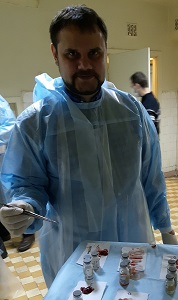In modern reanimatology, one of the key problems is the fight against hypoxia, which is caused by oxygen deficiency, is a phase process, depending on the severity and (or) duration of anoxic period, which leads to a complex of functional and metabolic disorders in the cell. It has now been proven that any critical state is accompanied by a lack of oxygen supply/consumption. Therefore, the development of drugs and techniques aimed at the prevention and treatment of ischemic damage to organs and systems, is currently an urgent and difficult task.

The Department of Anesthesiology and Intensive Care is actively working on the study of this issue and started the second series of acute experiments within the framework of the research work "Development of methods of pharmacological protection of an organism from various types of tissue hypoxia". The researches were conducted on the basis of the vivarium of NAMPO named after PL Shupyk (Head Zadnipryan AA).

A series of acute experiments was devoted to the study of a number of new substances from the group of condensed indoles, which theoretically have antihypoxic properties. The research was conducted under the direction of the head of the Department of Anesthesiology and Intensive Care, professor Loskutov OA. Scientific group included associate professors Dzyuba DO, Druzhina OM, clinical residents of the department Bolyuk M., Efimenko R. and interns of the department. Special gratitude for cardiac surgeon of the DU "Institute of the Heart of the Ministry of Health of Ukraine" Demyanchuk VB.

In conditions of total intravenous anesthesia, laboratory animals` coronary vessels were perfused with test substance solutions to determine their effectiveness in terms of antihypoxic protection. During the experiment, the histological material was collected in 8 groups of the study.
It is planned to receive scientifically substantiated theoretical and practical results that will have unconditional interest and promote the development of representations about the preservation of the viability of the organism in the anoxic period.



